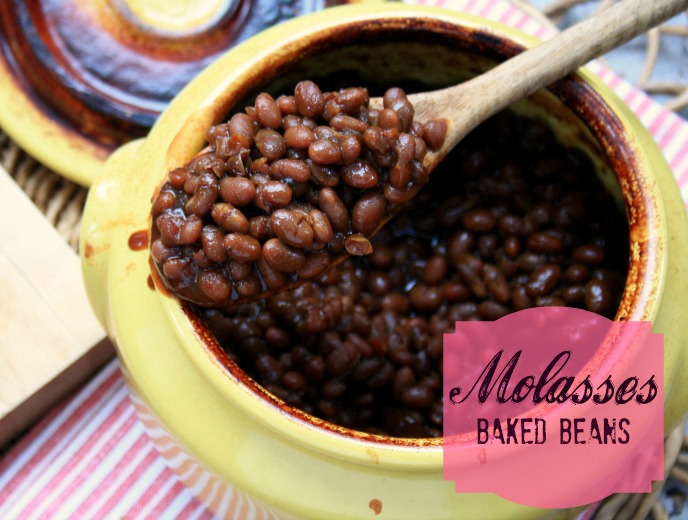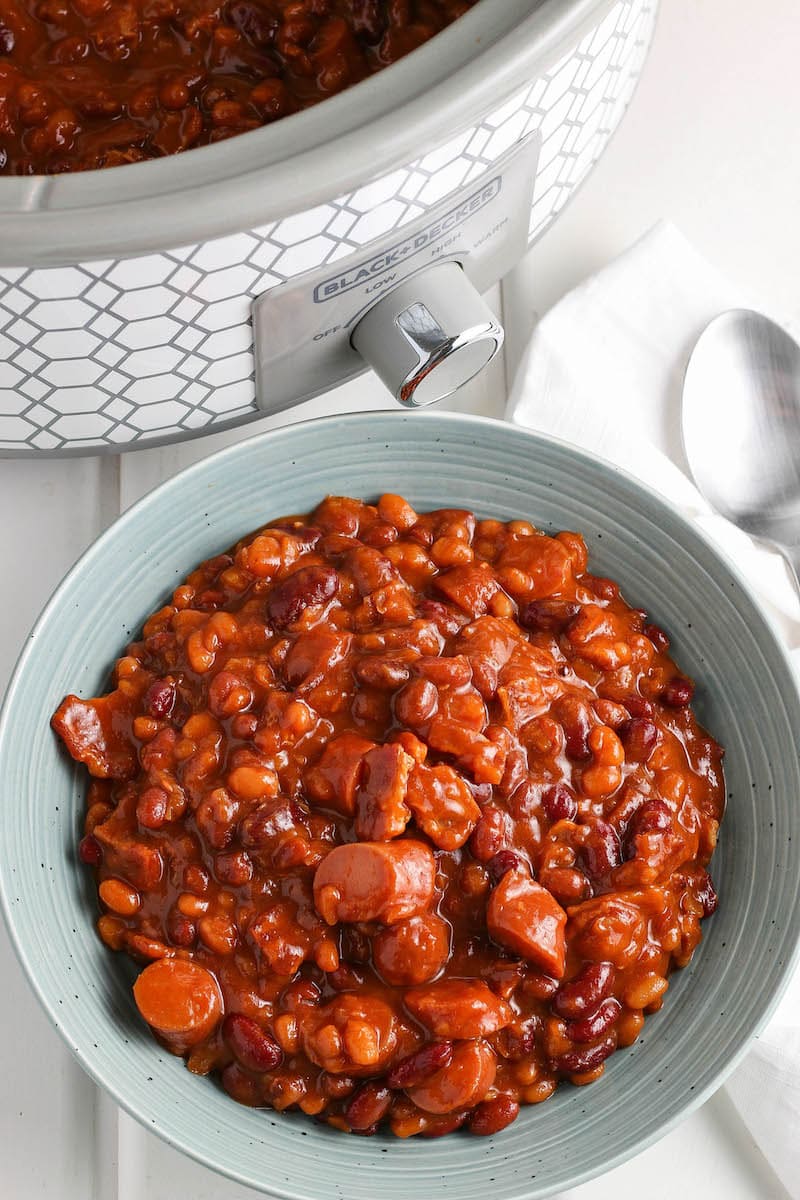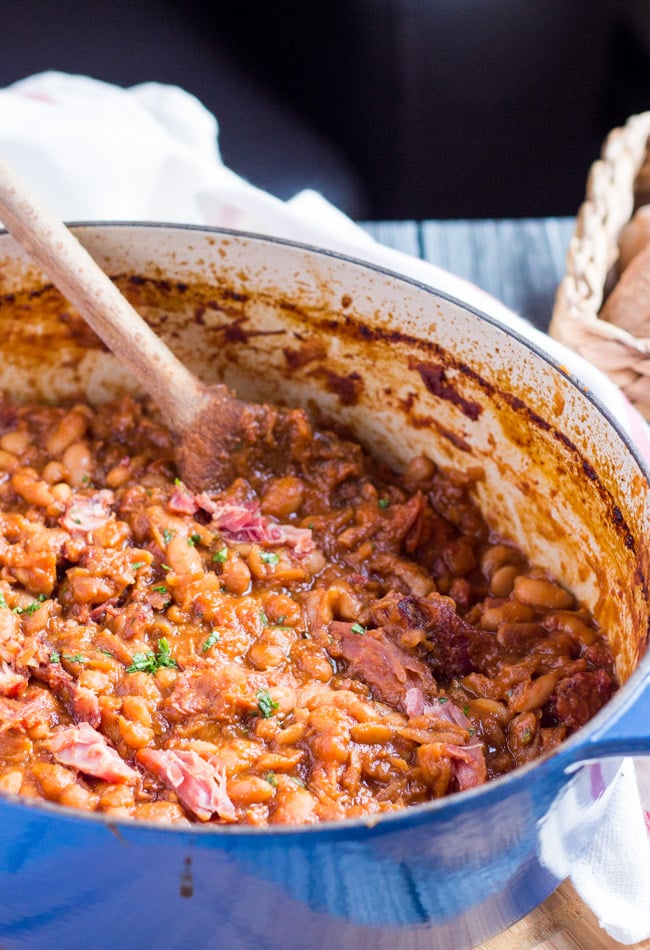

As much as a pound of streaky pork was added to a quart of dried beans. In baked bean history, pork used to be more prominent in beans. Certainly canned beans are sweeter than my homemade ones are. My former husband used to get out the jug of Crosby’s molasses and add more sweetening at the table - you may prefer the sweeter route as well.


Personally, I like a less sweet bean and use only a third of a cup of molasses or so, and no sugar.
TRADITIONA BAKEED BEANS USING A JAR OF BEANS PLUS
A common recipe calls for a two pound package of dry beans with a quarter cup of sugar plus one-half to two-thirds of a cup of molasses. Most Mainers these days make a pretty sweet bean. But the cook probably had to keep adding water so they wouldn’t dry out. I’ve also enjoyed awfully good beans baked in a wide, deep baking pan with no lid. Slow cookers, instant pots and other arrangements no doubt have their advantages when baking beans, like not having to have an oven turned on for hours. The old fashioned brown and white pot is the ideal cooking vessel. Yellow Eyes, though, are the standard bean for baking beans from scratch. It’s fun to grow baking beans if you have enough room in the garden to dedicate to the project and the patience to shell them out, unless you have an old style bean thresher. I grow Marfax and other baking beans like Kenearly, King of the Early and Tiger’s Eye, which are elegant golden beans with a swirl of mahogany that, sadly, disappears when you cook them. They’ve since disappeared from supermarkets’ shelves but can be found in smaller stores in various corners of the state. Until a few years ago, you could buy Marfax beans at chain supermarkets in Maine. But Mainers often prefer big beans like Yellow Eyes, Jacobs Cattle or Soldier. Southern New England’s prominent bean is the navy pea bean, which is a little white bean. In addition to declaring their independence in statehood in 1820, Mainers have declared a kind of ongoing bean independence by sticking to old style beans called heirlooms. Where would we be in winter without them? Where would we be in summer, for that matter, if you serve them at family reunions, barbecues or to celebrate Maine’s heritage by baking them in a bean hole?


 0 kommentar(er)
0 kommentar(er)
